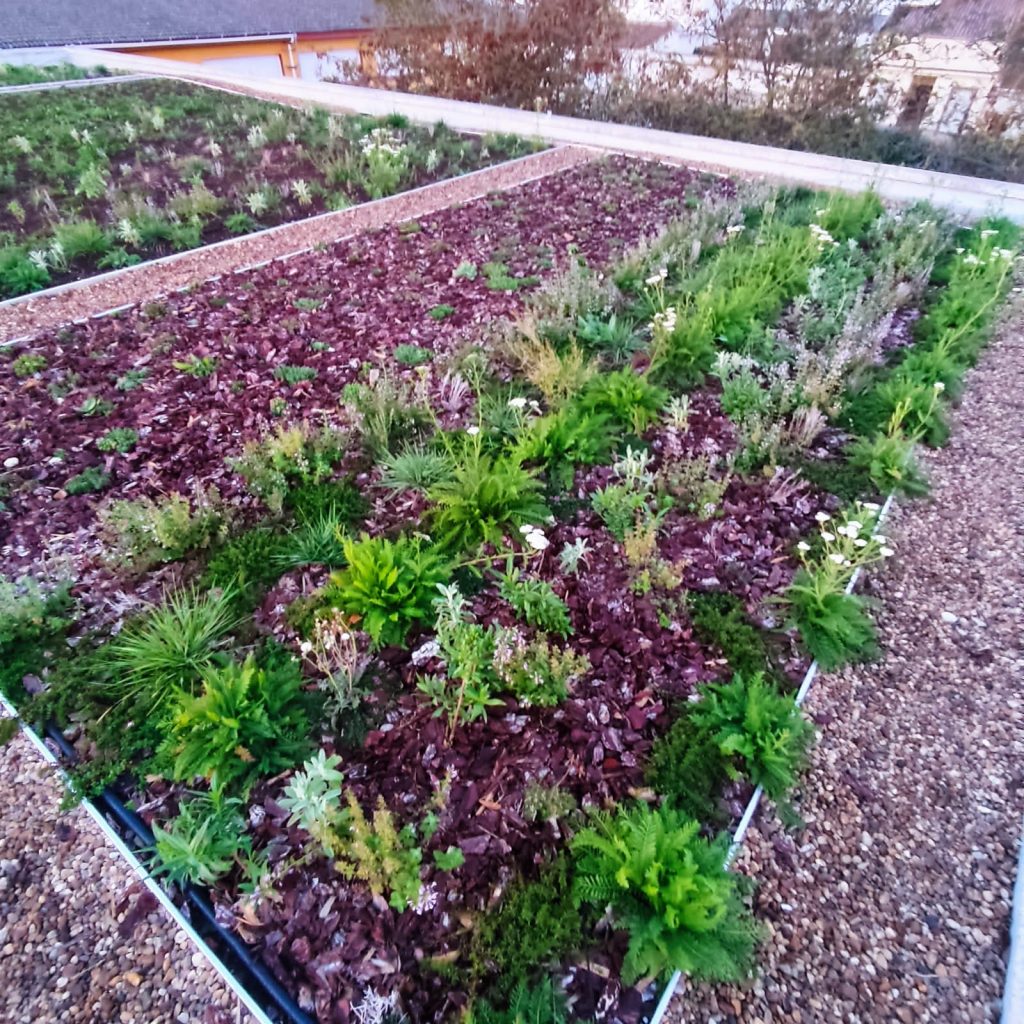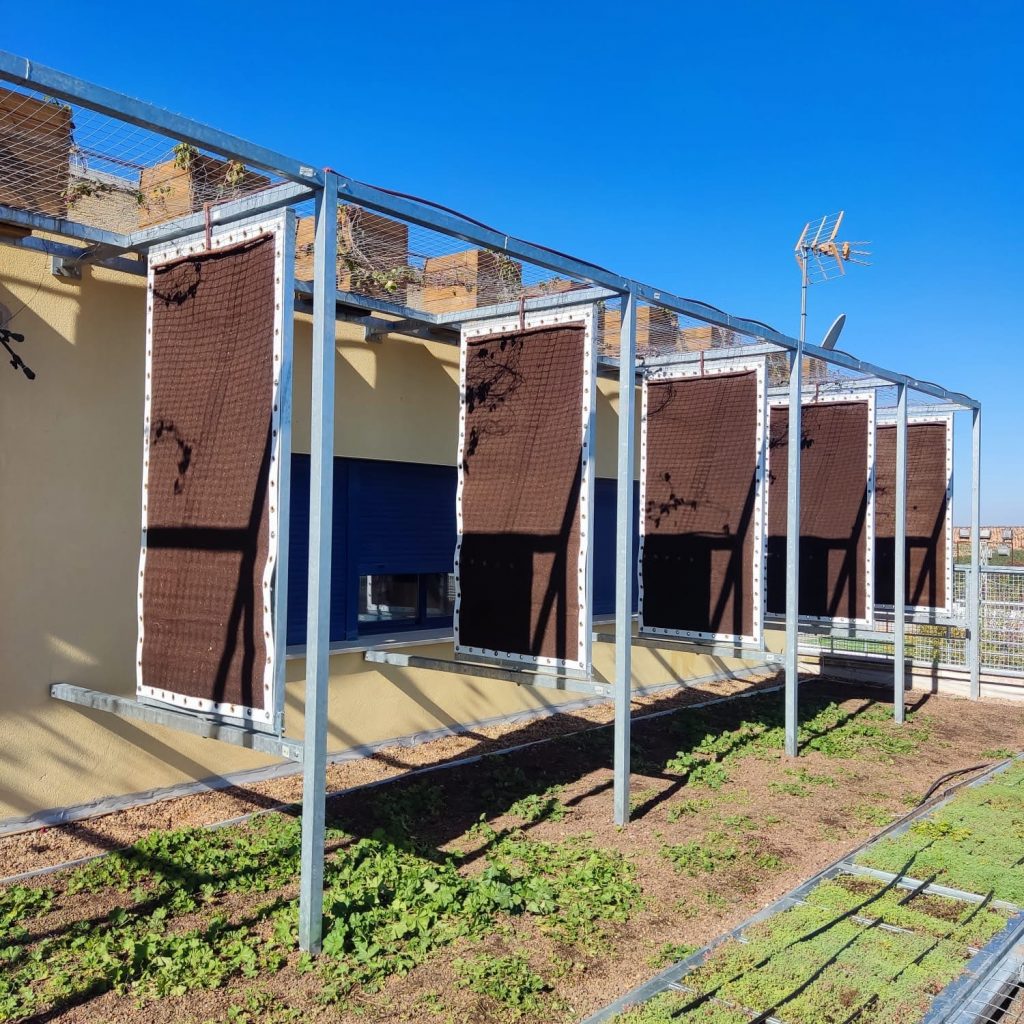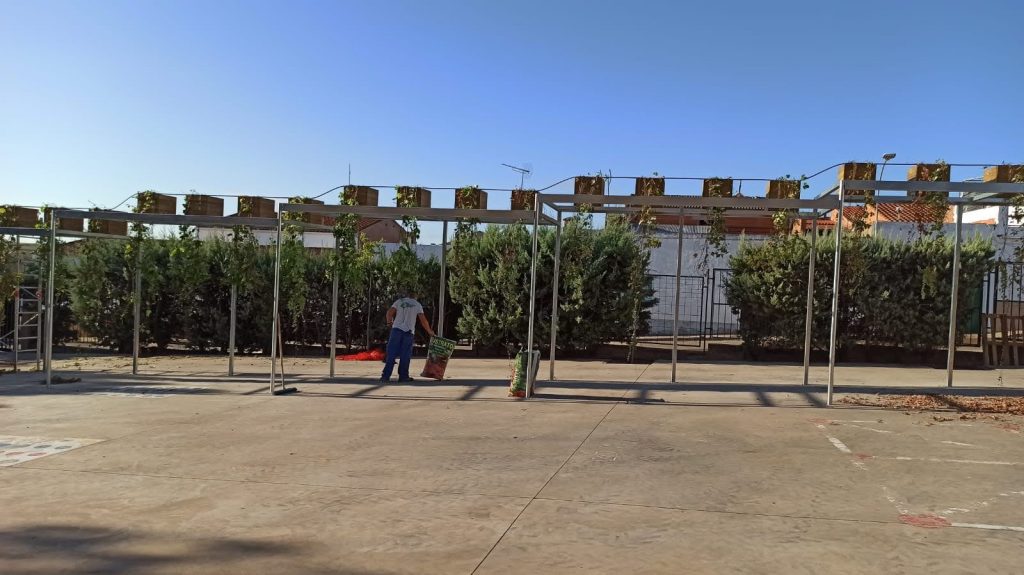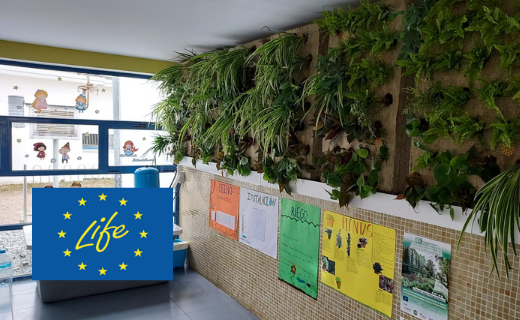My building is green is a project that focuses on the implementation of Nature-Based Solutions in public education buildings and social centres.
Co-funded by the European Union’s LIFE programme, it creates solutions for adapting to climate change, improving environmental health and comfort in buildings.

The overall objective of this project is to increase climate resilience in education buildings and social care services in the province of Badajoz, Oporto and Évora through the implementation of Nature-Based Solutions (NBS) as prototypes of climate adaptation and improvement of well-being in buildings.
From Singulargreen, in coordination with the technological centre CARTIF, we have participated in the design and implementation of Nature Based Solutions (NBS) in the CEIP Gabriela Mistral in Solana de los Barros, Badajoz.
The different actions carried out have been shading on façades with climbing plant species; landscaped roofs, draining soils to reduce the volume of water to be treated in the sewage network, pergolas and shading canopies with plant species for outdoor areas.

The main objectives are:
- Improve the thermal comfort of the children and teachers in the school.
- Increase the amount of green surfaces in the school space in a sustainable way.
- Reduce the carbon footprint of the buildings and improve water management in the buildings.
- To recover and promote local biodiversity in the urban environment.
- Raise awareness of the value of nature and the ecosystem services produced.
Intervention on roofs
One of the project’s actions was the installation of extensive green roofs with a high visual impact from inside the school. With this type of roof, the vegetation is responsible for capturing and dissipating the heat from solar radiation, reducing the heat island effect and improving the thermal sensation inside the classrooms.

In addition, creative solutions have been designed to increase the amount of green surfaces. This is a system consisting of a metal structure that supports pots with hanging plants on its surface, and pots with climbing plants are placed on the ground, so that the vegetation is joined together to form a large plant arch. The high surface area pots have a great capacity to capture water, which improves the use of water.

Intervention on façades
On the façade, it is proposed to shade the openings, mainly to prevent the entry of direct radiation, which increases the temperature and sometimes hinders the development of classes due to intense lighting on blackboards or classroom screens. In addition to the planters with hanging and climbing plants, vertical vegetated awnings will be installed, two per window, with the Leafskin system patented by SingularGreen, which in addition to providing shade to the building reduce the heat island effect.
With these actions, the health and well-being of students and teachers will be improved, as in addition to air renewal, the levels of carbon dioxide inside the classrooms will be reduced.

Intervention on the exterior
On the outside of the building, trees were planted, a partial perimeter shading structure was implemented and draining and photocatalytic green paving was installed. This will reduce the temperature of the building envelope and create a cool area on the north side, thanks to the lower temperature and higher humidity in the ground.
The expected impacts of this action will be to reduce the insolation of the building, create the ‘cold’ air intake area for the natural ventilation system and modulate the entry of direct radiation mainly on the ground floor.

This project is intended as a pilot experience that will allow conclusions to be drawn so that these solutions can be extended to other municipalities in the province.
Involvement of pupils
The success of this project lies in the involvement of students, teachers and the AMPA, both in the care of the facilities and in raising awareness of their benefits. In addition, this initiative can be the seed for new projects aimed at studying many aspects of the subjects live.
An example of this is the implementation of a vertical garden with the F+P system by the pupils of CEIP Parque Alameda, in Valladolid. Through which they were able to learn about the design process, the selection of species, the installation and the irrigation system. This initiative aims to raise awareness among children about the importance of nature and respect for the environment.







